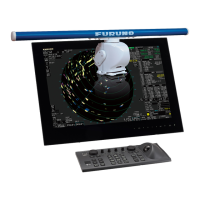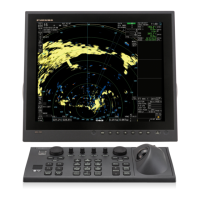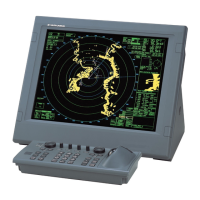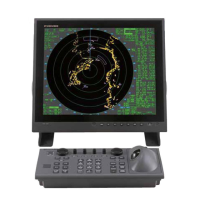
Do you have a question about the Furuno FAR-2328-NXT and is the answer not in the manual?
| Brand | Furuno |
|---|---|
| Model | FAR-2328-NXT |
| Category | Marine Radar |
| Language | English |
Defines the meaning of DANGER, WARNING, and CAUTION symbols and their implications.
Lists essential safety precautions for operating the radar equipment.
Details safety distances related to RF radiation levels from the radar antenna.
Provides an overview of the radar controls available on the RCU-014, RCU-015, and RCU-016 units.
Guides the user on how to open, close, and operate the radar's menu system.
Explains how to assign functions to the F1-F4 keys for one-touch access.
Details procedures for starting and stopping radar transmission and antenna rotation.
Guides on reducing sea clutter using A/C SEA control, manually or automatically.
Guides on reducing rain clutter using AUTO RAIN and A/C RAIN controls.
Describes the ACE function for automatic detection and reduction of sea and rain clutter.
Explains how to assign function keys to provide optimum radar settings for specific situations.
Describes how to use offset EBL for measuring range/bearing between targets and assessing collision risk.
Describes the Target Analyzer function for analyzing echoes and identifying dangerous targets.
Explains how the target alarm alerts the navigator to targets entering specific areas.
Describes the performance monitor for checking radar transmitter power and receiver sensitivity.
Describes the alert system, including priority, category, and interpretation of alert messages.
Explains how to display images from two radars together on one display for enhanced features.
Explains common types of false echoes like multiple echoes, sidelobes, and virtual images.
Provides information on SART operation, including description and display of marks.
Highlights safety precautions and factors affecting tracking accuracy for the TT system.
Identifies the main keys used in target tracking mode: ACQ, TARGET DATA, and TARGET CANCEL.
Details how to automatically or manually acquire and track targets on the radar display.
Guides on entering own ship's speed data using STW, SOG, or echo-referenced speed.
Explains how to cancel tracking for individual targets or all tracked targets.
Describes the TT lost alert when targets are not detected and how to set the lost target filter.
Describes how the radar calculates CPA and TCPA for AIS targets and sets collision alarms.
Details how acquisition zones alert targets and act as automatic acquisition areas.
Describes the trial maneuver feature to simulate own ship's movement against tracked targets.
Lists TT system messages, their priority, meaning, and required action.
Discusses factors like sea returns, rain/snow, and low gain that affect target tracking accuracy.
Identifies the main keys used for AIS operation: TARGET DATA and TARGET CANCEL.
Details how to filter out unnecessary AIS objects from the display using the AIS DISP FILTER menu.
Explains how to convert sleeping AIS targets to activated targets for better movement monitoring.
Guides on sleeping activated AIS targets to focus on important radar and AIS targets.
Describes the AIS lost alert when objects fail to produce data and how to set the AIS lost filter.
Describes how the radar calculates CPA and TCPA for AIS targets and sets collision alarms.
Provides a regular maintenance program including checks for LCD, antenna unit, and processor unit.
Details the location and type of fuses for AC and DC powered configurations and replacement procedure.
Provides common troubleshooting procedures for issues like picture freeze or no echo.
Describes hardware and software troubleshooting procedures for qualified service personnel.
Explains how to execute a diagnostic test program for circuit boards and components.











